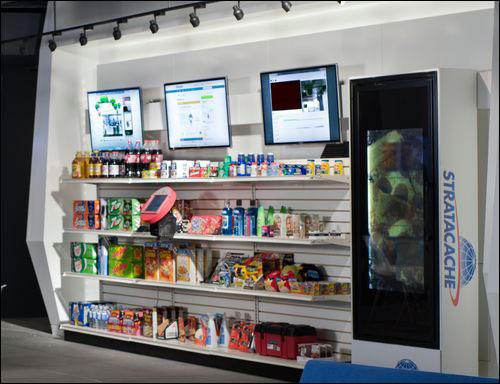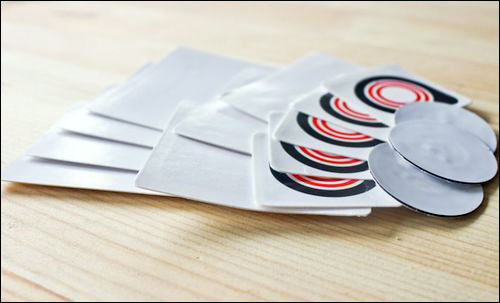Several years ago, a San Francisco company called Tagstand was launched with a single purpose, according to Kulveer Taggar, one of the firm’s founders and its CEO: to sell Near Field Communication (NFC) RFID stickers. Taggar, along with his fellow cofounders, had noticed that anyone looking to buy just a few NFC tags in order to begin developing their own NFC-based systems would have few options. Typically, he says, NFC tags are sold in high volume.
“We set ourselves up as an NFC tag store,” Taggar states. However, once Tagstand began selling its tags to small companies and entrepreneurs, it saw a demand for an end-to-end service. Customers were not only seeking to buy tags, he says, but also asking for solutions. With the arrival of Google‘s Nexus S NFC-enabled phone, interest increased further. In response, Tagstand developed Tagstand Manager, a hosted application that customers could access via a Web interface.

Tagstand Manager was developed to allow businesses to experiment with ways in which they could employ NFC RFID technology without making major financial commitments, such as purchasing software or large volumes of tags. Instead, Taggar says, a handful of NFC stickers and access to the Tagstand Manager server are sufficient.
One of Tagstand’s customers is IPG Media Lab, a digital media firm based in New York City. Since October 2011, IPG Media Lab has been offering its clients NFC RFID technology that they could utilize for a variety of custom applications related to sharing product data with customers. The company also uses NFC within its showroom, to measure the interest generated by each of its digital displays, which illustrate the firm’s latest solutions for the transfer and display of media content.
Tagstand Manager enables developers to program and manage their NFC tags as they choose, over the Internet—thus far, at no charge. Users can simply log onto the site, provide tag ID numbers and write instructions for those tags—either to forward NFC tag IDs to Web sites, or to link them to messages, coupons, business cards or other data. When a user taps an NFC-enabled phone against a tag, the phone transmits that tag’s ID number to the Tagstand Manager server, which provides an instruction, such as a Web site URL for the user to visit. That URL would then be displayed on the individual’s phone.
Tagstand offers an NFC Hobbyist starter kit for $17.25, consisting of 15 NFC stickers pre-encoded to work with the Tagstand Manager hosted application. Tagstand Manager is currently in use by more than 1,000 customers, both within the United States and internationally. At present, the Web-based service is free. The company sells NFC tags (made with NXP Semiconductors‘ Mifare chips>) from a variety of vendors, including Smartrac and Identive Group.
For companies like IPG Media Lab, the solution affords them an opportunity to experiment with NFC solutions. Its showroom features 35 to 40 different technology demonstrations, each consisting of a touch screen that displays images or video. As a customer arrives, IPG Media Lab provides that person with an NFC-enabled mobile phone to carry throughout that visit. After viewing various technology selections, the visitor is then asked to take the phone to the demonstrations found to be the most interesting, and to place the handset near the NFC tag attached to each of those displays. The tag sends its own identifier to the phone’s reader, which then forwards that information to the Tagstand server, where it can be accessed by IPG Media Lab. That data provides the media company with visibility into which displays were most popular, and with whom.
Clients love the NFC-based demonstrations, says Chad Stoller, IPG Media Lab’s managing partner. Several pilots are planned for later this year, he notes, at retail locations, as well as at entertainment events.
In some cases, says Omar Seyal, Tagstand’s CTO and one of the other cofounders, simply linking a tag to a Web site or basic data is insufficient, however. Many of Tagstand’s customers, he explains, are hobbyists interested in using NFC to trigger more complex actions. To address this need, the company began looking into NFC-based apps for mobile phones, and discovered NFC Task Launcher, an Android app enabling users to become more creative with NFC tags. (NFC Task Launcher’s developer, Joshua Krohn, has since become a member of Tagstand’s staff.) Tagstand offers NFC Task Launcher, available through the Google Play online store for $1.99, allowing users to write instructions directly to an NFC tag that prompt a phone to perform specific actions when a particular tag’s unique ID is read. For example, a person could use NFC Task Launcher to activate a phone’s Bluetooth function when the handset is tapped next to an NFC tag within a car, or to turn off Wi-Fi or start a music app. An NFC tag attached to a nightstand could be utilized to set a phone’s ringer to vibrate, dim the display or set an alarm.
Because the commands are written to the tag by the NFC Task Launcher app, running on the phone, rather than being stored in software on a server, there is no service to sign up for. Anyone scanning the tag will have the same actions performed on or by his or her phone if the app is installed. If the app has not yet been installed, the tag read will direct the phone to the Tagstand Task Launcher site, where the user will see an invitation to download the app. Tagstand currently has many thousands of such hobbyist customers using this app, Seyal says.




